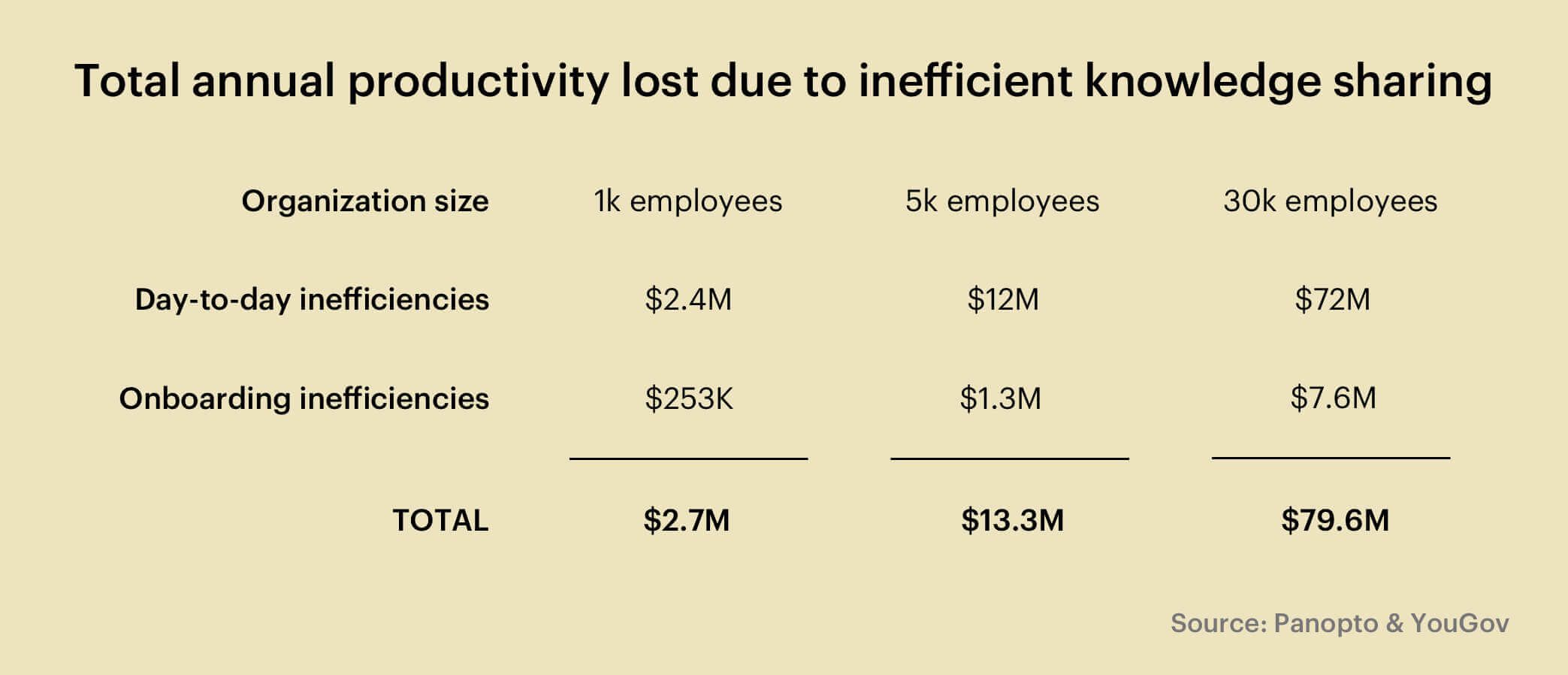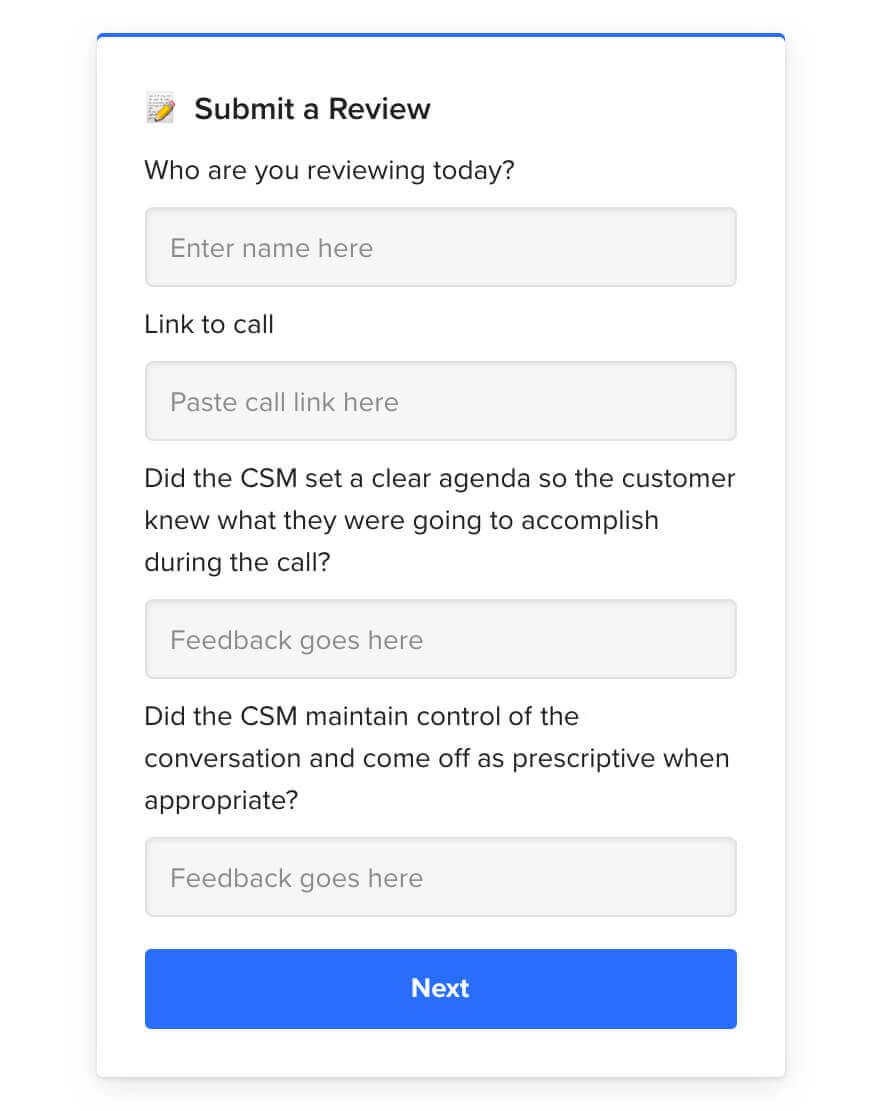
Brew and Review: Building a knowledge sharing loop for Customer Success
Main illustration: Sonya Korshenboym
It was almost a year ago when our Customer Success team came up against an issue that all growing teams face: knowledge sharing.
We had a large group of talented people – some who knew features and workarounds better than anyone else, some who were experts in technical concepts, some who excelled in project and relationship management, and others who had a deep knowledge of particular industries.
The only problem? We were operating in silos. Our de-facto ways of working made it difficult for us to learn from one another, especially when it came to sharing best practices for talking to our customers.
For rapidly scaling teams like ours, the value of knowledge sharing can’t be understated. Breakdowns in knowledge sharing are expensive – a study from Panopto and YouGov found that these inefficiencies can cost large companies more than $2.7 million a year in lost productivity.
Not only does knowledge sharing save time and resources, it also prevents information from disappearing when employees leave. And best of all? It creates a more cohesive, friction-free experience for your customers, no matter who they’re talking to.

When “riding along” on calls isn’t enough
More often than not, knowledge sharing in customer-facing roles means doing “ride-alongs” where teammates shadow each other on calls or in meetings. There’s nothing wrong with ride-alongs in theory. After all, aren’t we taught to show rather than tell?
That’s exactly what we tried to do at first, taking what seemed like a logical approach. We would invite each other to our meetings with customers whenever the other person had free time and encourage each other to ask, “How did that call go?”
“As with any high-performing team, free time is more myth than reality and we weren’t transferring much value doing ride-alongs”
But it turns out, as with any high-performing team, free time is more myth than reality and we weren’t transferring much value this way. Sometimes we would end up being double booked and unable to join a meeting to listen in. Other times, customers would get distracted when a new person joined the call or we would unknowingly skip over helpful details when summarizing what was discussed.
We needed a better solution – one that could accommodate our growing team and jam-packed schedules while making time for us to learn from each other.
Building our own knowledge sharing loop
Enter “Brew and Review,” a lightweight process that I created for our Customer Success team. Brew and Review pairs us up every two weeks with the goal of reviewing and giving feedback on recorded calls – all done on our own time. After reviewing the call, teammates are encouraged to grab a cup of coffee to discuss in person, hence the “Brew” ☕ part of the name.
Here’s how I quickly got Brew and Review up and running at Intercom, along with a few tips to help you create your own version.
1. Define the parameters for success
The first step is to define what, how, and why. What problem are you solving? How do you plan to solve it? And why should you do it that way? I started by meeting with my team to understand why ride-alongs were failing. These became a few of the parameters for the tool I built:
- Accountability: It was important to the team that everyone agreed to participate in the pairing cycles when it came to both submitting calls and reviewing them.
- Flexibility: While people wanted to provide feedback on each other’s calls, they needed the ability to do it on their own schedule.
- Standardization: The team wanted to provide feedback in a templatized format, so we could avoid subjective feedback – no more “that was great.”
Once I had input from the team, I created a plan that stated the problem, the objectives, the tools I planned on using, a loose timeframe, and what I needed from my teammates.
2. Get the team excited about knowledge sharing
Even when change is warranted and wanted, inertia, competing priorities, and a whole host of other factors can still get in your way. Oftentimes, it’s not coming up with the idea or plan that’s the hurdle. It’s getting people to care enough about your project to support it.
“Even when change is warranted and wanted, inertia and a whole host of other factors can still get in your way”
To help make the case for a new knowledge sharing process, I turned my plan into a digestible overview. I highlighted how it was going to help my teammates get better at their jobs. After explaining my vision and, crucially, emphasizing the low amount of effort needed from them, I was able to gain my teammates’ support for Brew and Review.
3. Put the right tools and processes in place
Getting 100% adoption for any product is nearly impossible – in fact, it’s a challenge Customer Success Managers face every day.
In order to reduce time to adoption, I based my knowledge sharing tool on one everyone was already using: Slack. After looking into different Slack apps, I chose Donut which pairs people up at the frequency of your choosing. I decided to pair my team up every two weeks to start.
“I focused on assessing how well we were executing best practices”
To ensure we all received the same types and quality of feedback, I created a template for the team to fill out after they had listened to their partner’s customer call. I focused the questions on assessing how well we were executing on best practices like setting a clear agenda, controlling the conversation, and defining next steps for the customer. When teammates meet up for coffee, these templates help guide the conversation.

4. Set live, test, and improve
After the first pairing, I met with my team to understand how I could improve Brew and Review. Generally their feedback was positive, but it also highlighted a few areas that needed work. For example, across the board, our customer success managers expressed an interest in having a centralized repository for all of the completed reviews. Not only would this allow them to look back at historical feedback, but it could also serve as a self-serve resource for new hires.
“Each piece of feedback was an opportunity to add more even value to our knowledge sharing process”
Teammates also called out an interest in being able to categorize reviews, so we could easily search our new repository. Now we tag each call review with keywords like the agenda items and product names. If a customer success managers wants to listen to a call on how customers are using data in Intercom, for example, they can search for “data strategy.”
Extra credit: Use a Customer Communications Platform that gives you full context
While Brew and Review primarily focuses on our customer calls, we also know how much essential communication happens outside of these check-ins, via conversational, messenger-based support. By using the right platform for all of these communications, you can get a deeper understanding of your customers’ needs, and quickly share knowledge with other teammates (like members of your support or product teams) to get fast, efficient, in-context answers when needed.
Embracing a culture of knowledge sharing
With just a little lift, we all have the ability to drive lasting business impact through knowledge sharing. It doesn’t need to involve changing your team’s day-to-day routine or implementing new and expensive tools. Knowledge sharing is most effective when it’s tailored to how your team works and what they actually need. Then it becomes part of a culture of learning.
If you decide to implement your own version of Brew and Review, reach out to me at @NicoleRashied. I’d love to hear what you’ve come up with!







